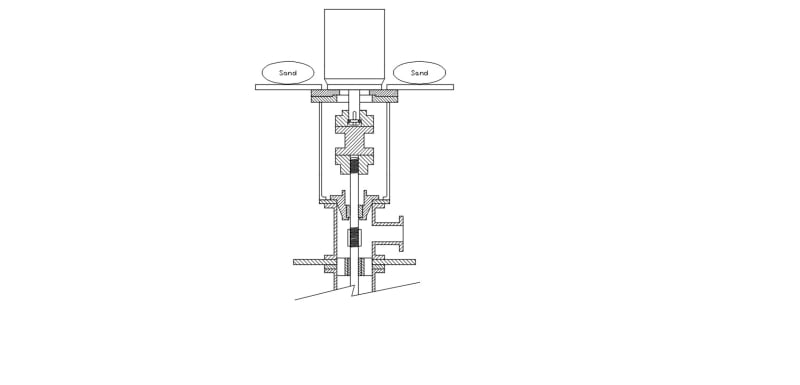Hey Guys,
Figured I'd give this forum a shot since this particular problem has us really baffled.
We have three 3600 RPM / 200 HP vertical 8 stage pumps pumping out of two LPG spheres. At any time two of the three pumps are running. One pump moves a sphere to the unit and one pump recirculates the other sphere. Each pump has their own suction and discharge piping and the in service pumps are periodically swapped back in forth based on demand.
Since commissioning, we've seen intermittent vibration show up on all three pumps. The vibration is at a frequency of 705 CPM and ranges from 0.5 to 0.8 IPS RMS at the pump discharge head. The vibration is only in the direction parallel to the suction and discharge piping.
When a pump is started up, one of two things happen. It either doesn't vibrate at startup and will continue to run indefinitely without vibration until we shut it down. It runs fine across all flow rates, suction heads, and pump speeds (these are on VFDs).
OR, at startup, the pump will begin to vibrate almost immediately and will continue to vibrate until we shut it down. The vibration persists across all flow rates, suctions heads, and pumps speeds.
I had the suction strainers checked and no material was found.
I had a bump check done and the first natural frequency is close to the vibration frequency we're seeing. The bump test told us the first natural frequency is 750 CPM.
I believe we are exciting this natural frequency but I cannot figure out why. Even though the pumps are on VFDs, we run them at 95% output all the time. The only time we ever change speed if for troubleshooting. I can't find anything in the system that would excite a natural frequency around 750 CPM. I can't find much info online about 0.20x vibrations
There has to be something process or flow related because sometimes we'll shut a vibrating pump down for a few days, and when we restart it, it runs great.
Anyone have any troubleshooting suggestions? I've reached out to the vendor but they haven't been helpful.
Attached is a vibration spectrum I pulled when one of the pumps was vibrating.
Thanks
Figured I'd give this forum a shot since this particular problem has us really baffled.
We have three 3600 RPM / 200 HP vertical 8 stage pumps pumping out of two LPG spheres. At any time two of the three pumps are running. One pump moves a sphere to the unit and one pump recirculates the other sphere. Each pump has their own suction and discharge piping and the in service pumps are periodically swapped back in forth based on demand.
Since commissioning, we've seen intermittent vibration show up on all three pumps. The vibration is at a frequency of 705 CPM and ranges from 0.5 to 0.8 IPS RMS at the pump discharge head. The vibration is only in the direction parallel to the suction and discharge piping.
When a pump is started up, one of two things happen. It either doesn't vibrate at startup and will continue to run indefinitely without vibration until we shut it down. It runs fine across all flow rates, suction heads, and pump speeds (these are on VFDs).
OR, at startup, the pump will begin to vibrate almost immediately and will continue to vibrate until we shut it down. The vibration persists across all flow rates, suctions heads, and pumps speeds.
I had the suction strainers checked and no material was found.
I had a bump check done and the first natural frequency is close to the vibration frequency we're seeing. The bump test told us the first natural frequency is 750 CPM.
I believe we are exciting this natural frequency but I cannot figure out why. Even though the pumps are on VFDs, we run them at 95% output all the time. The only time we ever change speed if for troubleshooting. I can't find anything in the system that would excite a natural frequency around 750 CPM. I can't find much info online about 0.20x vibrations
There has to be something process or flow related because sometimes we'll shut a vibrating pump down for a few days, and when we restart it, it runs great.
Anyone have any troubleshooting suggestions? I've reached out to the vendor but they haven't been helpful.
Attached is a vibration spectrum I pulled when one of the pumps was vibrating.
Thanks

